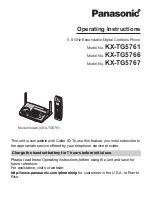
Loading and Dumping
The weight and position of the cargo and passenger can
change the machine center of gravity and machine handling.
To avoid loss of control resulting in personal injury, follow
these guidelines.
Do not carry loads which exceed the load limits described
on the machine-weight label.
WARNING
The bed will lower whenever the dump lever is
pushed down, even when the engine is off. Turning
off the engine will
not
prevent the box from
lowering, which could cause possible injury.
Always place the safety support on the extended lift
cylinder to hold the box up if you are not going to
lower it right away.
The machine has several combinations of boxes, platforms,
and attachments available. These can be used in various
combinations that allow for maximum capacity and versatility.
The full sized box is 140 cm (55 inches) wide by 165 cm
(65 inches) long and can hold up to 1,477 kg (3,249 lb) of
evenly-distributed cargo.
Loads vary in how they are distributed. Sand spreads out
evenly and quite low. Other items, such as bricks, fertilizer or
landscape timbers, stack higher in the box.
The height and weight of the load has a significant influence
on tip overs. The higher a load is stacked, the more likely the
vehicle is to tip over. You may find that 1,477 kg (3,249 lb)
stacks too high for safe operation. Reducing the total weight
is one way to reduce the risk of a tip over. Distributing the
load as low as possible is another way to reduce the risk of
a tip over.
If the load is positioned toward one of the sides, it will make
the machine much more likely to tip over on that side. This
is especially true when turning if the load is on the outside
of the turn.
Never position heavy loads behind the rear axle. If the load
is positioned so far to the rear that it is behind the rear axle,
it will reduce the weight on the front wheels, and this will
reduce steering traction. With the load all the way to the back,
the front wheels can even come off of the ground when going
over bumps or up a hill. This will result in a loss of steering
and may lead to the machine tipping over.
As a general rule, position the weight of the load evenly
from front to rear and evenly from side to side.
If a load is not secured, or you are transporting a liquid in a
large container such as a sprayer, it can shift. This shifting
happens most often while turning, going up or down hills,
suddenly changing speeds, or while driving over rough
surfaces. Shifting loads can lead to tip overs. Always secure
loads so that they do not shift. Never dump the load while
the machine is sideways on the hill.
Heavy loads increase stopping distance and reduce your
ability to turn quickly without tipping over.
The rear cargo space is intended for load carrying purposes
only, not for passengers.
Using the Differential Lock
The differential lock increases the machine traction by locking
the rear wheels so 1 wheel does not spin out. This can help
when you have heavy loads to haul on wet turf or slippery
areas, going up hills, and on sandy surfaces. It is important
to remember, however, that this extra traction is only for
temporary limited use. Its use does not replace the safe
operation, already discussed concerning steep hills and heavy
loads.
The differential lock causes the rear wheels to spin at the
same speed. When using the differential lock, your ability to
make sharp turns is somewhat restricted and may scuff the
turf. Use the differential lock only when needed, at slower
speeds and only in first or second gear.
WARNING
Tipping or rolling the machine on a hill will cause
serious injury.
•
The extra traction available with the differential
lock can be enough to get you into dangerous
situations, such as climbing slopes that are too
steep to turn around. Be extra careful when
operating with the differential lock on, especially
on steeper slopes.
•
If the differential lock is on when making a
sharp turn at a higher speed and the inside rear
wheel lifts off the ground, there may be a loss of
control, which could cause vehicle to skid. Use
the differential lock only at slower speeds.
28
Summary of Contents for Workman HD 07369
Page 55: ...Notes 55...
















































